Time flies, and so do home design trends. What once looked fresh and stylish a decade ago might now be subtly (or not-so-subtly) dating your space. From kitchen finishes that scream 2012 to architectural quirks that no longer serve a purpose, certain details have a way of revealing just how long it’s been since your last renovation. You might not notice them anymore—but guests, buyers, and design-savvy friends probably do.
Whether you’re thinking about selling, planning a remodel, or just want to keep your home feeling current, it’s worth knowing which features are giving away your home’s age. Here are 14 design elements that might be telling the world: “I haven’t updated in a while.”
1. Built-In Ovens and Stoves
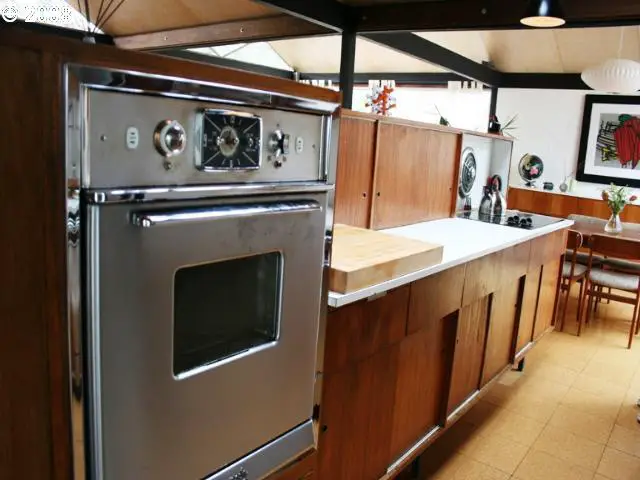
Built-in ovens and stoves were once a symbol of a high-end, modern kitchen, says This Old House. These appliances were integrated into the cabinetry to create a sleek, seamless look and were considered a sign of sophistication. However, with the rise of free-standing appliances that offer greater flexibility and portability, built-in stoves and ovens have become less common. Homeowners today often prefer standalone units that can be replaced or upgraded more easily.
Another factor contributing to the decline of built-in ovens and stoves is the rise of smart appliances, which often require a more adaptable setup. People are moving toward appliances that offer greater efficiency and features, which built-in models struggle to keep up with. As a result, this once-coveted feature has gradually been replaced by more practical and flexible kitchen solutions.
2. Tuscan-Inspired Kitchens

Tuscan-style kitchens had their moment in the spotlight in the early 2000s, offering a warm, rustic charm with dark wood cabinetry, tumbled stone backsplashes, and heavy, wrought-iron light fixtures. At the time, the aesthetic evoked old-world luxury and opulence, with rich tones and ornate detailing that felt decadent and cozy, according to Dwell. Unfortunately, these design elements haven’t aged well. The once-coveted golden granite countertops and carved corbels now feel overly ornate and visually heavy, especially as modern trends lean toward cleaner, more minimalist spaces.
Today’s kitchens prioritize light, openness, and functionality. Homeowners are embracing natural woods, matte finishes, and open shelving in favor of bulky cabinetry and outdated ornamentation. White oak cabinets, slim-profile hardware, and quartz countertops are just a few of the hallmarks of a modern upgrade. If your kitchen still channels the spirit of an Italian villa from a home magazine circa 2005, it may be time for a refresh that better reflects contemporary tastes and materials.
3. Cherry or Mahogany Cabinets

Deep red-toned cabinets like cherry or mahogany were once the epitome of elegance in high-end kitchen design, notes Homes & Gardens. Homeowners loved the richness and warmth these woods brought to the space, and their traditional appeal felt timeless—until it didn’t. Today, that same red hue can make a kitchen feel dark and heavy, especially when paired with equally dated granite countertops and warm-toned backsplashes. These cabinets are also difficult to pair with modern hardware and lighting, which often highlights their out-of-date appearance even more.
In contrast, current kitchen designs emphasize brightness, airiness, and a sense of simplicity. Light natural wood, painted cabinetry (particularly in whites, blues, and sage greens), or even two-toned designs are dominating renovation wishlists. These styles lend a more modern, welcoming feel to the space and work well with current trends in appliances, lighting, and flooring. If your kitchen is still rocking deep cherry wood, it might be the signal that your last renovation is celebrating its tenth—or fifteenth—birthday.
4. Carpeted Bathrooms
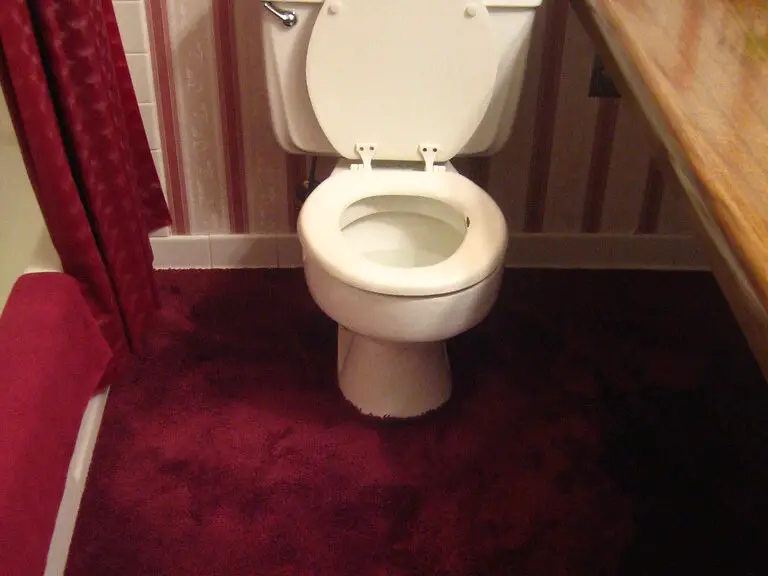
Carpeting in bathrooms was once popular for creating a soft, cozy atmosphere. It was often used in bathroom areas to add warmth and comfort underfoot, especially in colder climates. However, carpeting in bathrooms is now considered impractical and unhygienic, says Homebuilding & Renovating. The constant exposure to moisture from showers and sinks leads to mold, mildew, and unpleasant odors, making it a less desirable option.
In addition to hygiene concerns, carpet also requires a great deal of maintenance in these high-moisture areas. Modern bathrooms are more likely to feature tile, stone, or vinyl flooring, which are not only more durable but also easier to clean and maintain. As functionality has become more important than aesthetics in bathroom design, carpeted bathrooms have fallen out of favor.
5. Fluorescent Lighting
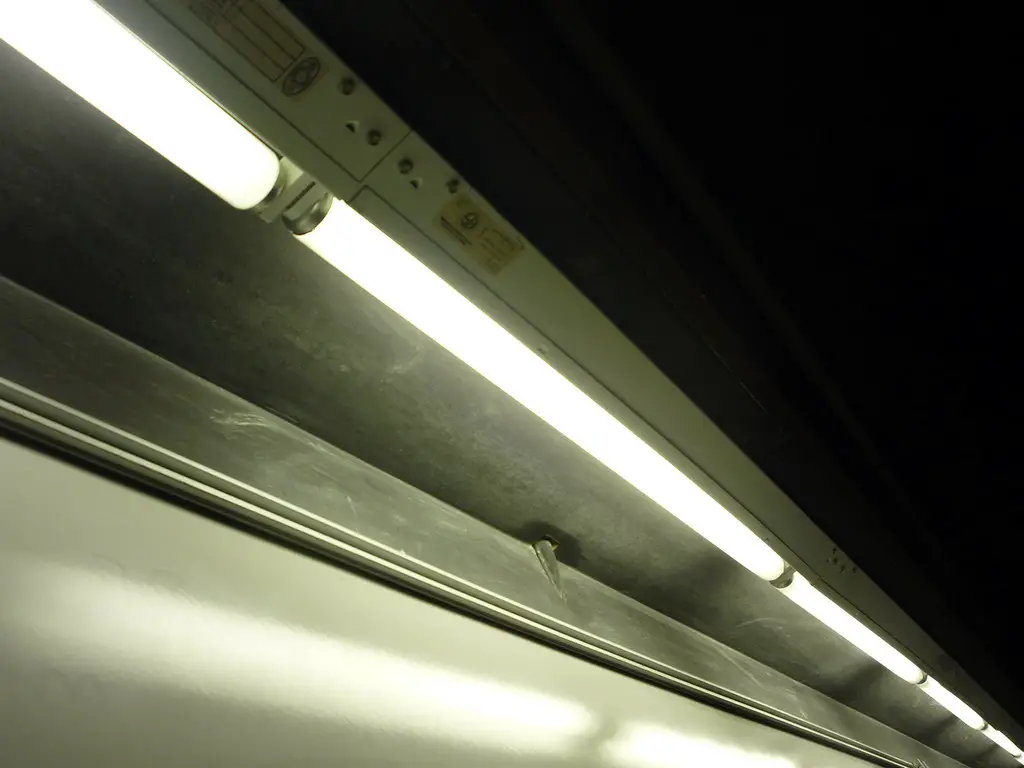
Fluorescent lighting was once a standard choice for many homes, particularly in kitchens and workspaces. Its bright, harsh light was seen as a practical option for providing ample illumination. However, over time, fluorescent lighting has been replaced by more energy-efficient and aesthetically pleasing alternatives. LED lights, which offer a softer, warmer glow and lower energy consumption, have become the preferred lighting option in most homes.
Fluorescent lights can also create an unflattering and cold ambiance, which is no longer in line with modern home design trends. Homeowners now favor light fixtures that can enhance the atmosphere of a room, offering both style and function. With the increased availability and affordability of LED lighting, fluorescent fixtures are no longer considered a must-have in modern homes.
6. Wall-Mounted Televisions
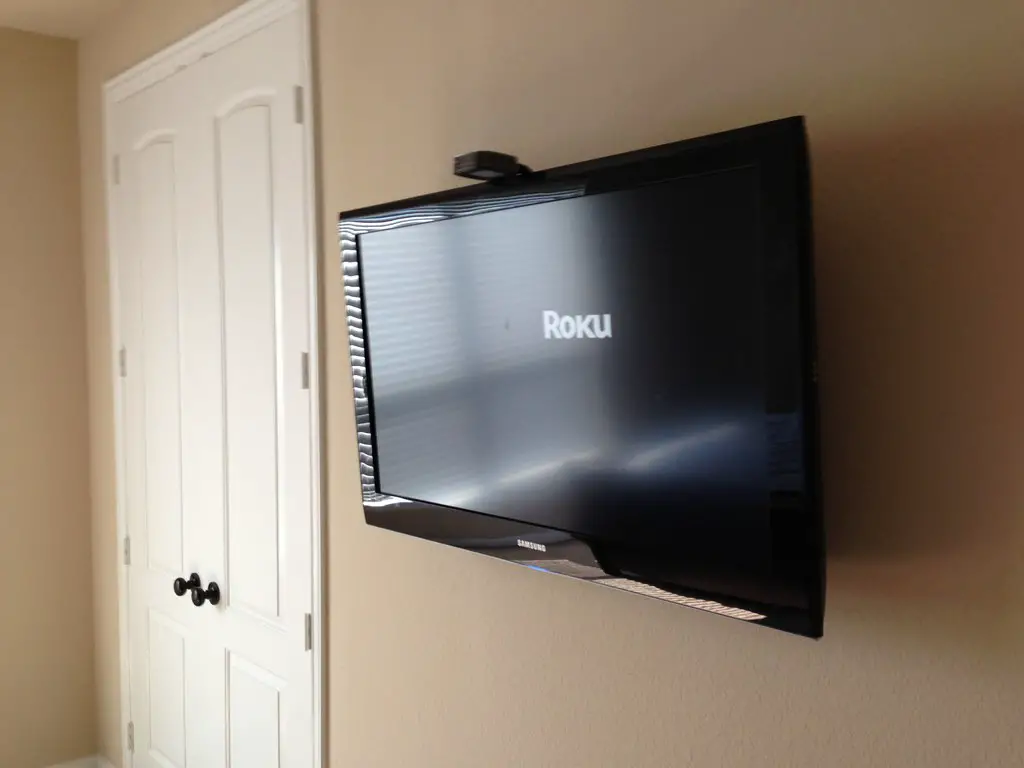
Wall-mounted televisions were once seen as a sleek and space-saving option for entertainment areas. These mounted units gave a modern, streamlined look and saved valuable floor space. However, as television sizes have grown and streaming services have become more integrated into home entertainment systems, wall-mounted TVs are becoming less popular. Many people now prefer larger entertainment centers or media consoles that allow for more flexibility and storage.
Additionally, the constant upgrades in technology, such as the shift to smart TVs and streaming devices, mean that mounting a television can become less practical. Modern living spaces are designed to accommodate a variety of entertainment setups, and wall-mounted televisions often do not fit into this versatile approach. As a result, this once-crucial feature is being replaced by more adaptable solutions.
7. Jacuzzi Tubs
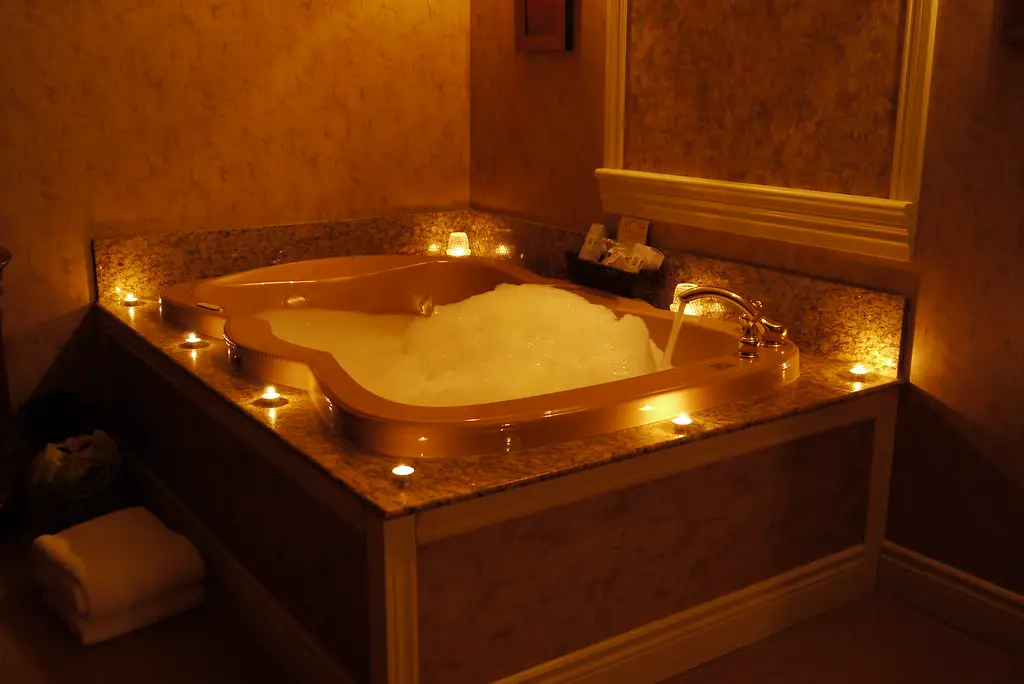
Jacuzzi tubs, once the pinnacle of luxury bathroom features, have fallen out of favor for many homeowners. These large, whirlpool-style tubs were seen as a relaxing oasis in the home, offering a spa-like experience. However, modern trends lean toward more practical and functional bathroom designs, and many people no longer prioritize the space-consuming jacuzzi tub. They are often replaced with larger walk-in showers or freestanding tubs that require less maintenance and are easier to clean.
Moreover, jacuzzi tubs are notorious for requiring a lot of water and energy to operate, making them less eco-friendly. In an age of increasing awareness about sustainability, many homeowners are opting for simpler and more efficient bathroom features. The jacuzzi tub, once a luxury staple, is now considered more of a dated feature than a must-have.
8. Wood Paneling

Wood paneling was a signature design element in homes, particularly in the 1970s and 1980s. It was used extensively to add warmth and texture to walls, often in living rooms or dens. However, over the years, wood paneling has fallen out of favor due to its association with outdated, kitschy interiors. Modern home design favors lighter, neutral-colored walls, which help to make spaces feel brighter and more open.
Furthermore, wood paneling can give a room a dark, heavy feel, which contrasts with the lighter, airier atmosphere that many homeowners desire today. As interior design has shifted toward minimalist and contemporary styles, wood paneling is no longer a sought-after feature. It’s often replaced by drywall, paint, or other materials that offer a cleaner, more modern look.
9. Popcorn Ceilings
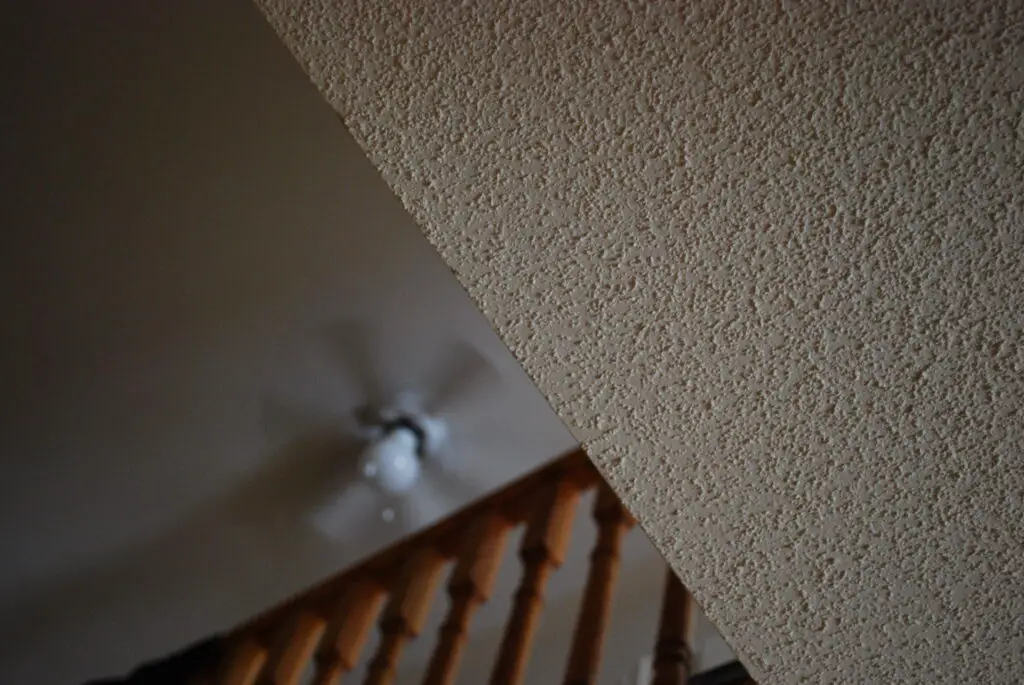
Popcorn ceilings, or acoustic ceilings, were once the go-to option for creating textured, sound-dampening surfaces. They were inexpensive to install and helped to mask imperfections in the ceiling. However, these ceilings have become a major design faux pas due to their outdated appearance and the difficulty of cleaning them. The texture can trap dust, cobwebs, and dirt, making maintenance a challenge.
Additionally, the presence of asbestos in older popcorn ceilings has led to safety concerns, further reducing their desirability. Homeowners today are opting for smooth, flat ceilings that are easier to clean and look more modern. As the preference for clean, simple lines continues to dominate, popcorn ceilings are increasingly seen as an eyesore rather than a practical feature.
10. Sunken Living Rooms
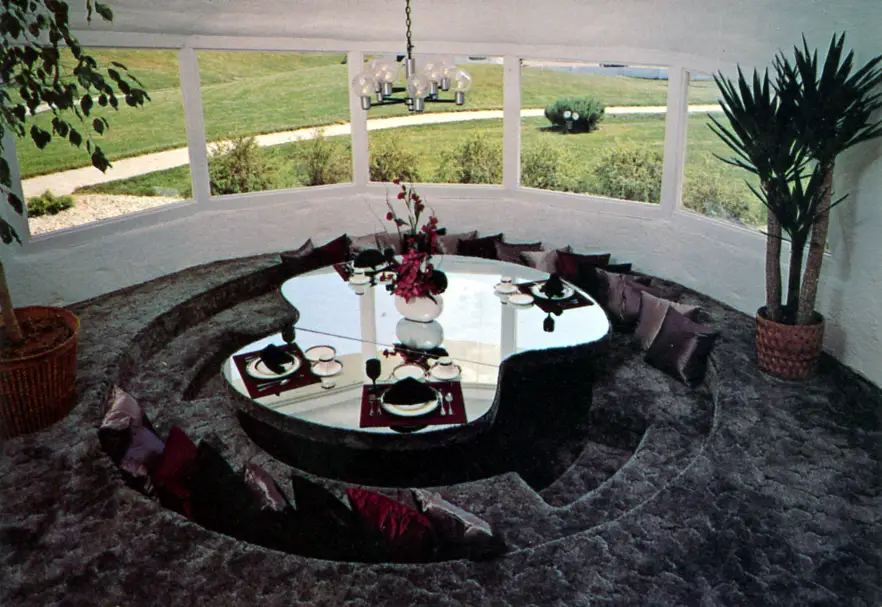
Sunken living rooms were a trendy design choice in the 1960s and 1970s, offering a sense of separation from the rest of the home. These multi-level spaces were intended to create visual interest and provide a more intimate atmosphere for gatherings. However, they have since fallen out of favor due to their awkward design and potential safety hazards. The rise of open-concept living, which emphasizes seamless flow between rooms, has made sunken living rooms less practical.
The inconvenience of steps leading down to a sunken area can also make the space difficult to furnish and navigate. As homeowners increasingly seek more functional and accessible spaces, sunken living rooms are being replaced by open, level-floor designs that offer better flow and usability. This once-popular feature has become an outdated and impractical design choice.
11. Wallpaper Borders

Wallpaper borders were once a common way to add color and pattern to the tops of walls or around doors and windows. These borders were often used to complement the wallpaper in the rest of the room, providing a cohesive design. However, as wallpaper itself has fallen out of favor, wallpaper borders have also become obsolete. Modern design trends focus on simplicity and clean lines, making wallpaper borders appear dated and unnecessary.
Additionally, wallpaper borders can make a room feel more enclosed and cluttered, which contrasts with the more open and airy atmosphere many homeowners desire today. With the popularity of neutral walls and minimalist decor, borders are seen as an outdated feature. Homeowners now prefer the clean, smooth lines of painted walls or minimalistic accents that offer a more modern and spacious look.
12. Oil-Rubbed Bronze Fixtures
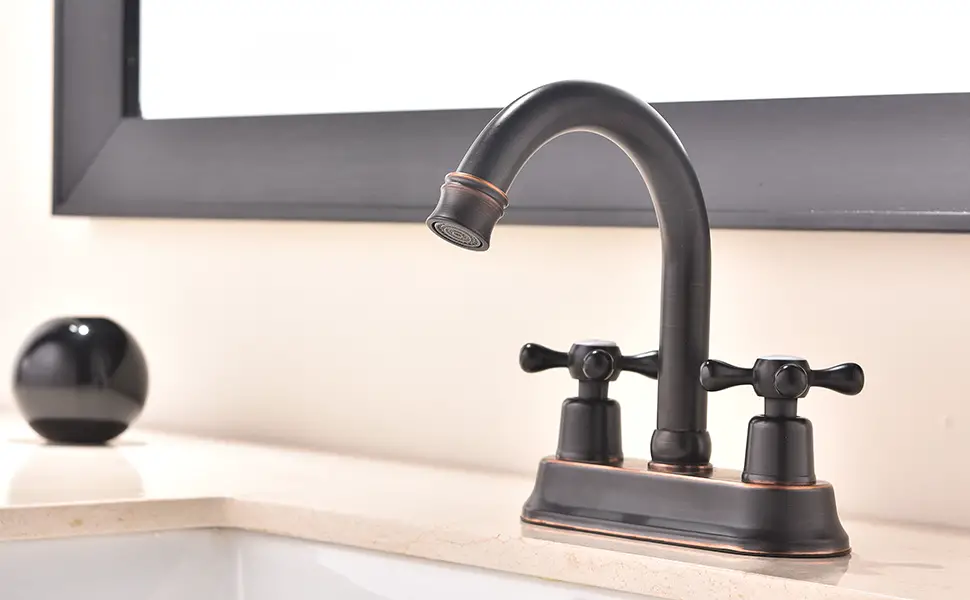
Oil-rubbed bronze fixtures had their heyday as the go-to finish for everything from faucets and drawer pulls to light fixtures and curtain rods. The dark, matte texture offered a rustic, “vintage” appeal that felt elevated and different from the standard chrome and brushed nickel of previous years. But what once felt sophisticated and distinctive has now become a clear marker of the early 2010s. It tends to make a space feel visually heavy, especially when paired with similarly dark wood cabinetry or brown-toned walls.
These days, finishes are trending lighter, sleeker, and more flexible. Matte black remains popular, but brushed brass and soft gold are the darlings of the moment, offering a warm yet modern aesthetic. Mixed metal finishes are also in vogue, allowing homeowners to blend styles and finishes for a layered, intentional look. If oil-rubbed bronze dominates your kitchen or bathroom, it could be a clear sign that your home hasn’t seen a style update in quite some time.
13. Tile Countertops
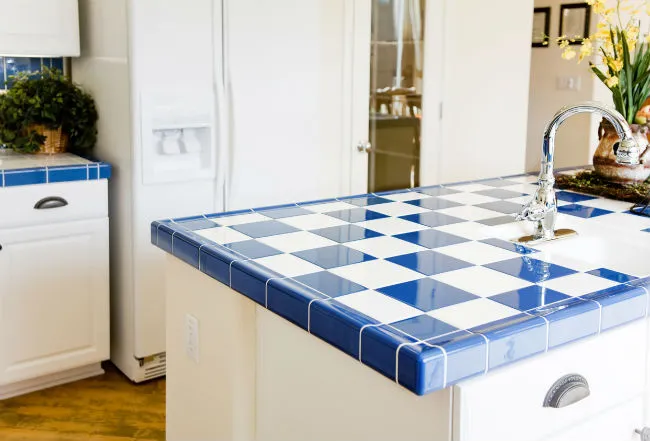
Tile countertops were once considered a practical, affordable alternative to natural stone. They were easy to install, offered endless customization through color and pattern, and were often used to add a bit of personality to kitchens and bathrooms. However, the grout lines that come with them quickly proved to be a downside, making cleaning difficult and inviting staining, mold, or bacteria buildup over time. Even high-end tile installations can’t compete with the seamless, modern look of today’s popular materials.
Modern countertop trends have moved toward durability, minimal upkeep, and a clean aesthetic. Materials like quartz, solid-surface composites, and even butcher block offer sleeker, more functional alternatives that elevate the entire space. These materials also better complement contemporary cabinetry, lighting, and appliances. If tile countertops are still a major feature in your kitchen or bath, they’re likely dating the space more than you think—and might be the first item worth upgrading in your next renovation.
14. Certain Wallpaper Designs
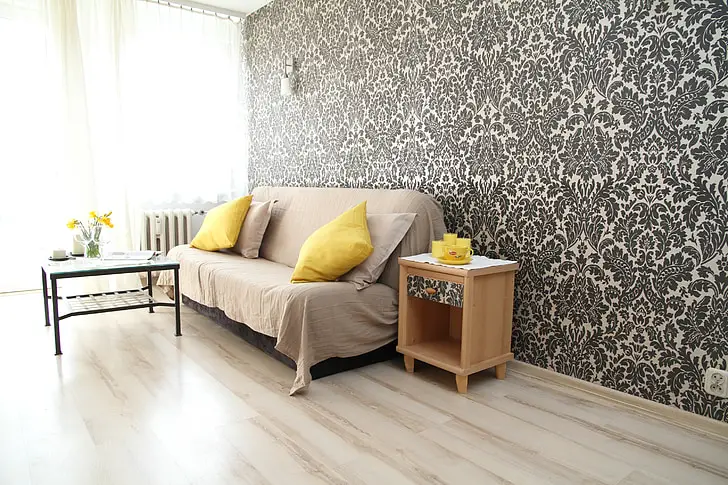
Wallpaper was once a go-to choice for adding color and design to a room. Its intricate patterns and vibrant colors were popular for creating statement walls or whole-room designs. However, over time, wallpaper has fallen out of favor due to its tendency to peel, stain, and fade. Today, painted walls are the preferred option for their easy maintenance and flexibility.
While wallpaper is still used in some modern designs, it’s typically reserved for small accents like feature walls or specific areas of a room. With the availability of paint in virtually any color or texture, the demand for wallpaper has significantly decreased. Homeowners now prioritize simplicity and ease of care, making wallpaper a less desirable option for most.
